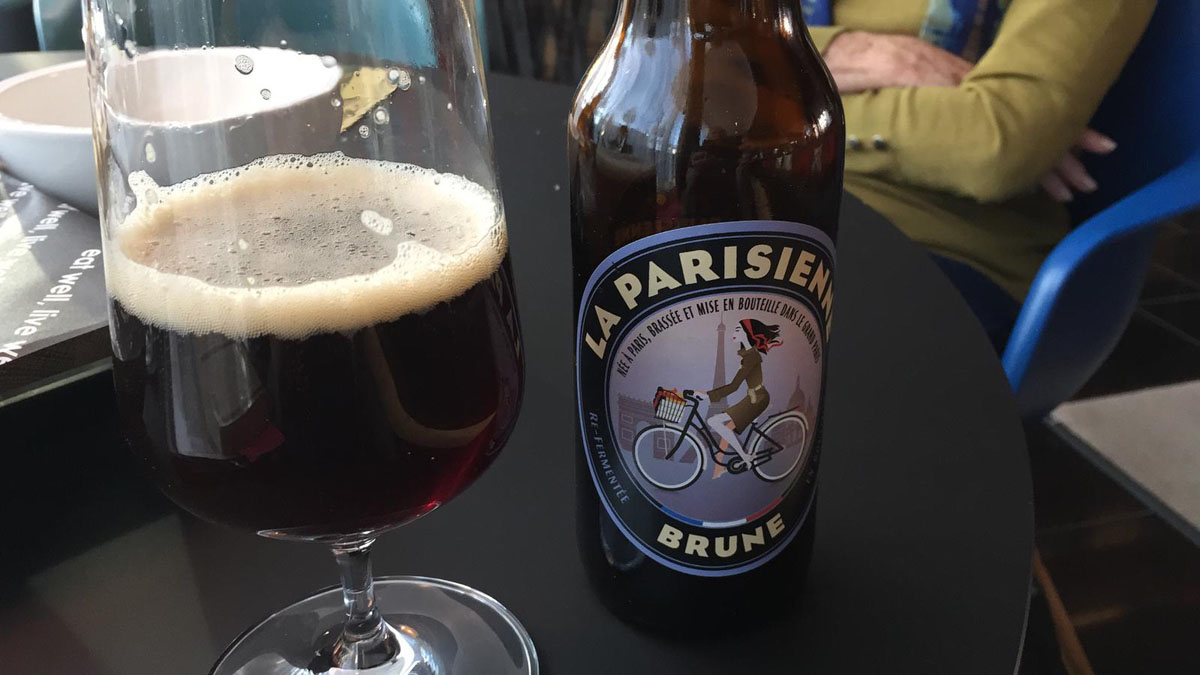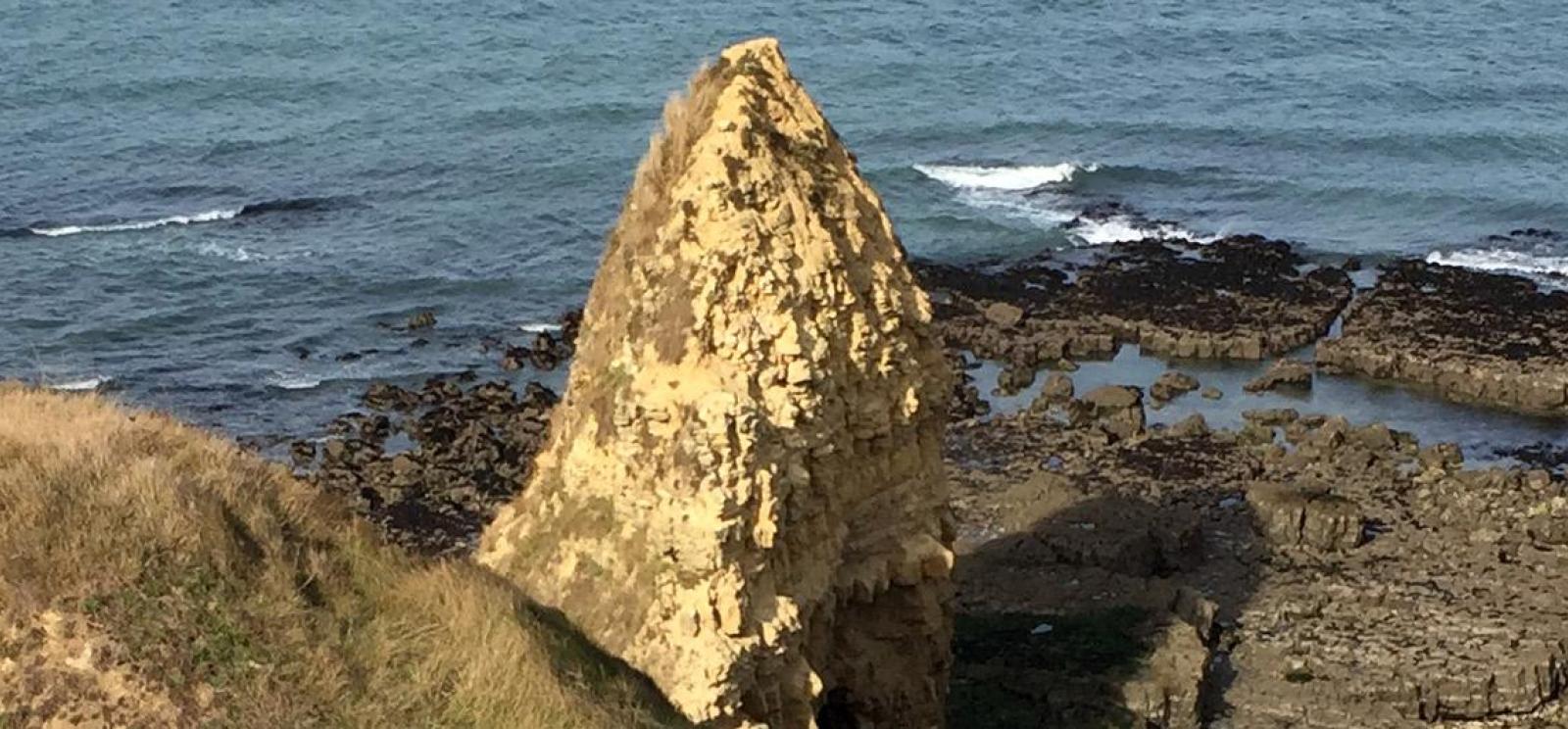Great leaders are forged upon battlefields, particularly in the harrowing year of 1918.
The Truman Library Institute, along with the National WWI Museum and Memorial, embarked on a once-in-a-lifetime trip across the Western Front during the centennial of World War I, following in the footsteps of Capt. Harry S. Truman, exploring well-known battlefields and areas of American Expeditionary Forces involvement in France, with an additional stop to the World War II site of Normandy.
Doran Cart, senior curator at the National WWI Museum and Memorial, shares his daily reflections on this journey through history.
Oct. 16
Going uphill from the ancient city of Chateau Thierry, the impressive sight of the newly-restored American Battle Monuments memorial soon filled the skyline. Built after the war, the memorial honors those American units which served in the area in 1917-1918. It was truly an excellent introduction for the tour members to the importance of the AEF in the war. A large map gave the location of the AEF troops.
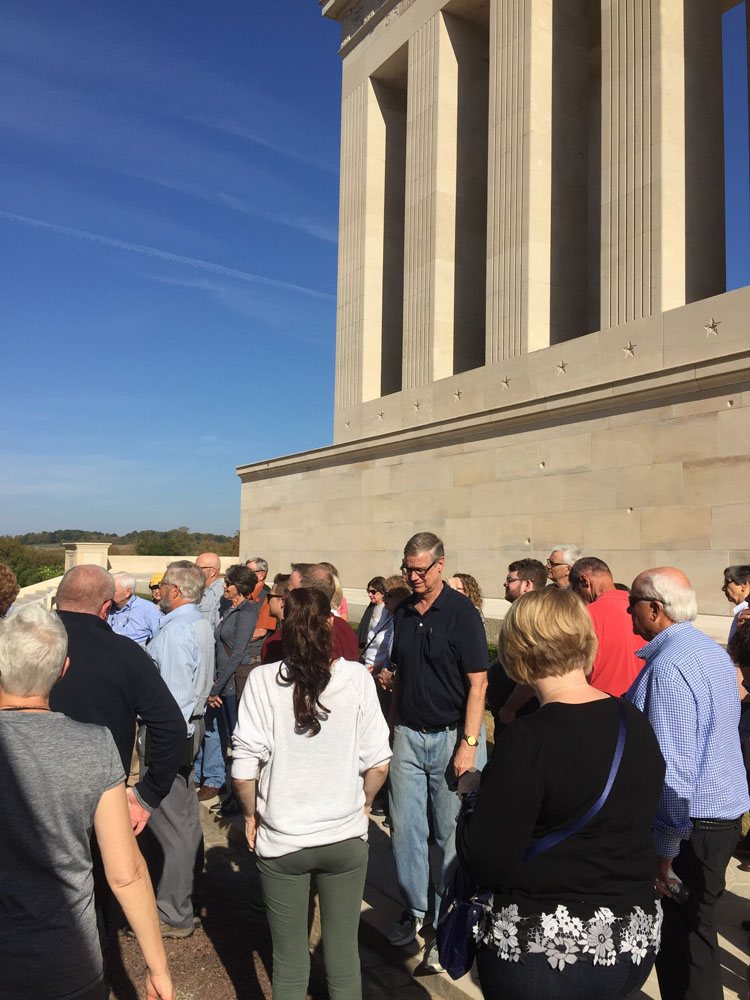
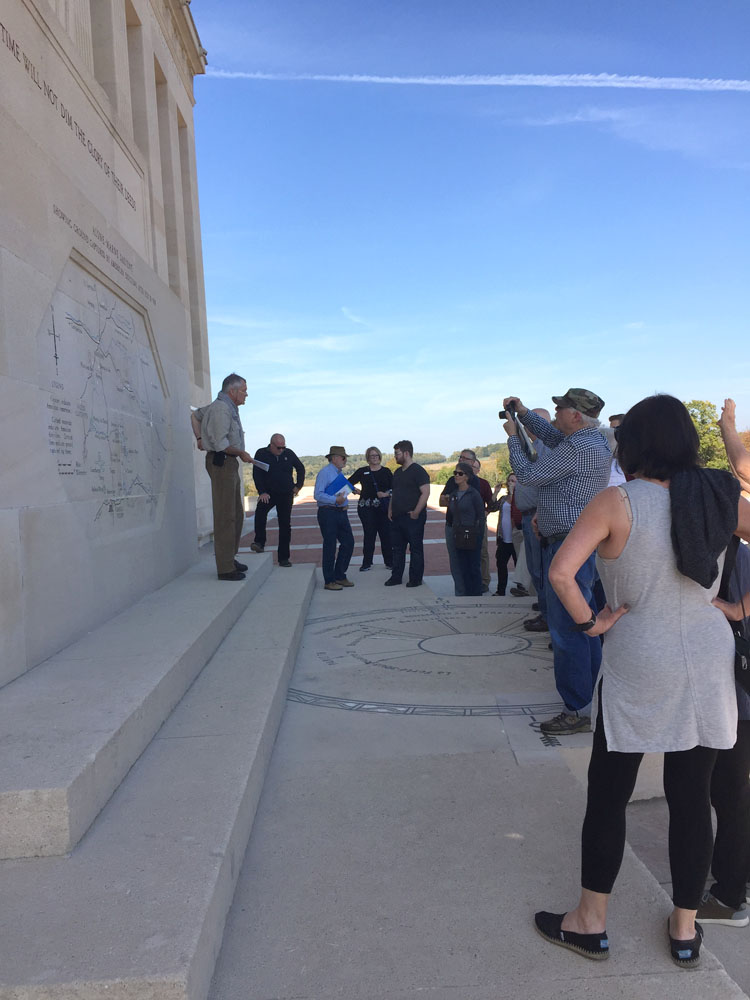
Corporal Frank Courtney Lane, 110th Engineers, 35th Division, A.E.F. wrote: “Somewhere in France, September 7, 1918: We are getting acquainted with the finest people in Europe - the French. They are the greatest home lovers in the world. Families have lived on the same little plot of ground for hundreds of years. Imagine the American, raised in a small town, working hard for fifty years and never getting any further than fifty miles from home. Their towns have no attractions for an American, yet they suffice the needs of the people and surely are a paradise for the boys just out of the trenches.”
An artilleryman, Private (later Corporal) C. Vernoy Davis served in Battery F, 7th Field Artillery, 1st Division kept a detailed diary, and some of his entries described the Marne Salient and the global nature of the Allied forces in France. On the day before the attack began “July 17th – This afternoon several of us had a conversation with one of the officers of the Moroccan Infantry. He carried a scimitar at this side.”
The new visitors’ center at the memorial gives a brief but well-illustrated history of those actions on the Aisne-Marne Rivers.
Oct. 17
In a foggy morning similar to the morning of September 26, 1918, we stood by the railroad tracks near Aubreville where the American naval guns mounted on railway carriages started the opening artillery barrage. From September 1918 until the Armistice, U. S. Navy gunners in army uniforms, operated five railway batteries of 14-inch naval guns in bombardments of German ammunition dumps, bases, lines of communication and trench positions often from as far away as twenty-three miles. This railroad section was ideal because it curved towards the German lines. The curve of the tracks was the only way to aim these gigantic guns.
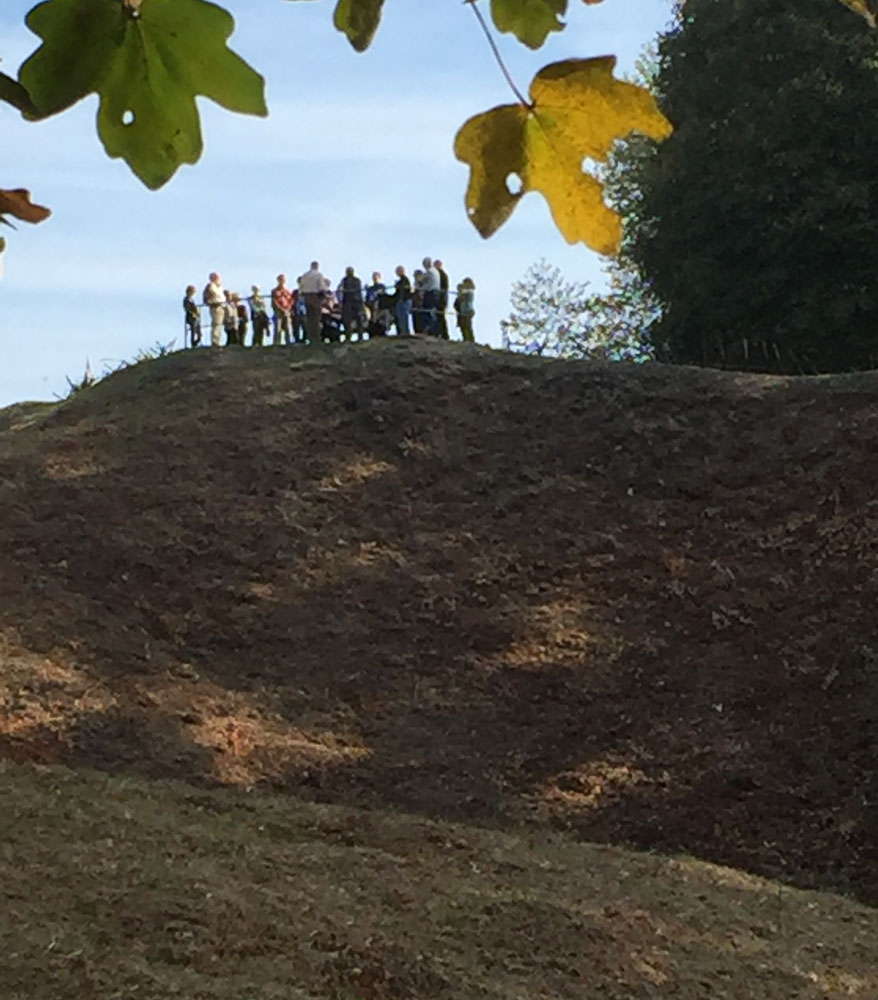
Shortly, the coach stopped for a stand populated today by curious cows but where on Sept. 26, 1918, Captain Harry S. Truman’s Battery D of 4 French 75mm guns blazed into action.
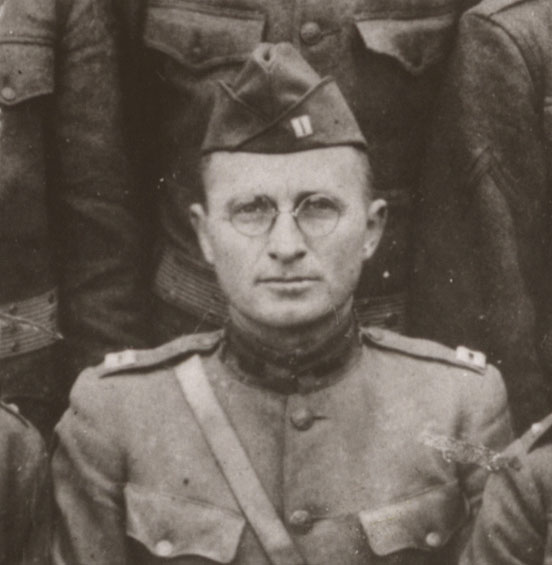
He wrote the day after: “The Major ordered me to move to the right and get across No Man’s Land as quickly as possible and take up position in a wood back of Vauquois Hill. That was about four o’clock. At three A.M. on the 27th the last carriage was in the position designated. This distance was only about a mile and a half but it was nothing but a bog. Mud, mud, mud.”
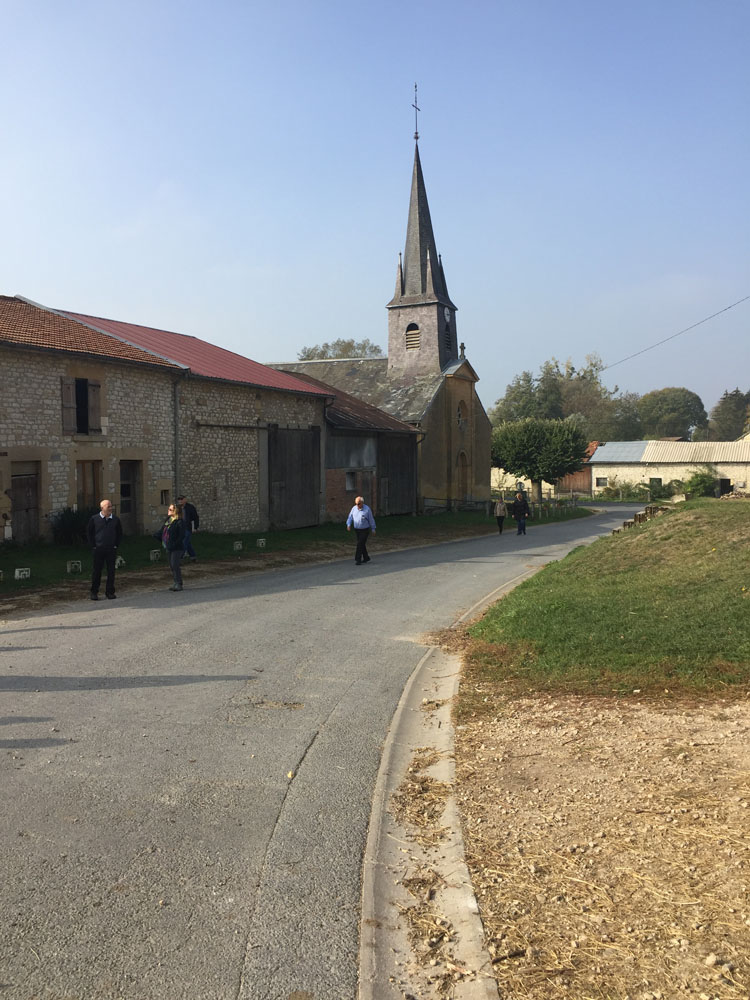
Later, at Exermont, after walking down the main street and at the church, several descriptions of action by the 35th Division there were given, along with the very loud braying of the nearby donkey. The church also silently revealed the terror of the next world war with a very small marking in the stone of the Cross of Lorraine, signifying a safe house for French resistors.
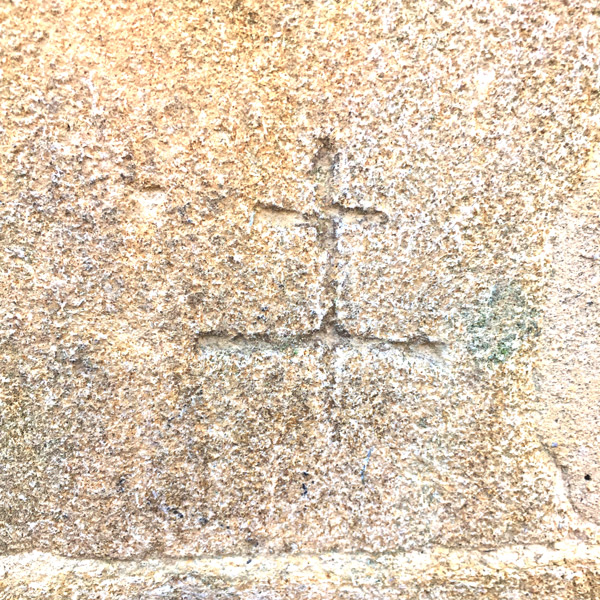
Very moving stands were presented for tour members at Chaudron Farm, including stories about dentists, like Walter Cronkite Sr., as front-line medics, not just pulling teeth.
Visiting the Missouri Monument near Cheppy, we learned about Truman’s battery location and from newly-acquired original documents in the National WWI Museum and Memorial’s collection, a more specific location of where tank corps commander, Colonel George S. Patton, was wounded. The American memorial at Montfaucon and the Butte de Vauquois provided breath-taking views of actions from over a century ago.
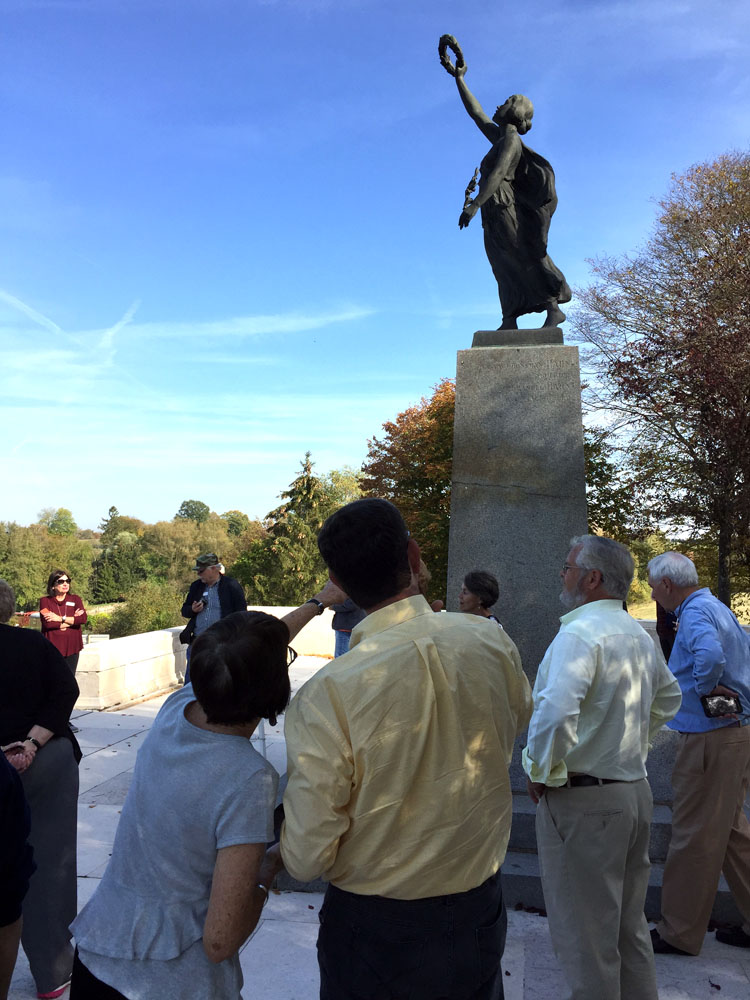
Oct. 18
Captain Harry S. Truman often risked his life by acting as a Forward Observation Officer (FOO), crawling towards enemy lines and reporting by telephone back to his guns the directions for firing. Near Charpentry, where at a hedge line on Sept. 27, 1918, German defensive positions were located along an ancient Roman road. Infantrymen of the 139th and 140th Regiments, 35th Division, had to wade across the stream in chest-deep water to attack. The tour stopped in a field above the German strong positions and with excellent scholarship, our main guide, Mike Sheil, placed us close to where Captain Truman directed his guns under heavy attack. One of his gunners later described Truman there and that he had “never heard a man cuss so well or so intelligently and I’d shoed a million mules.”
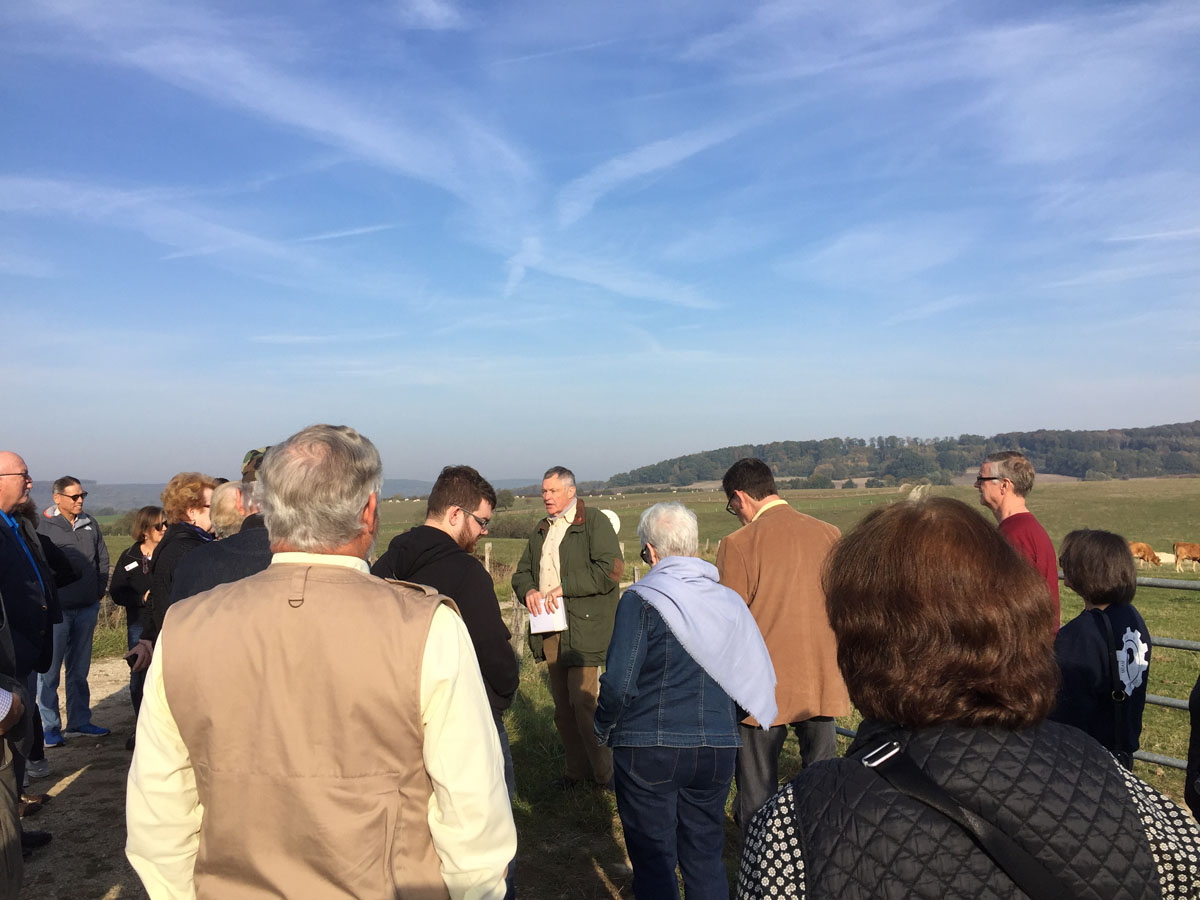
Along a farm ridge near Cunel, another young man from Missouri changed his life forever with a courageous one-man stand that resulted in his receiving the Medal of Honor. Private (later corporal) John Lewis Barkley’s Medal of Honor citation reads: “for conspicuous gallantry and intrepidity above and beyond the call of duty in action with the enemy near Cunel, France, October 7, 1918. Pvt. Barkley, who was stationed in an observation post half a kilometer from the German line, on his own initiative, repaired a captured German Machine gun and mounted it in a disabled French tank near his post.
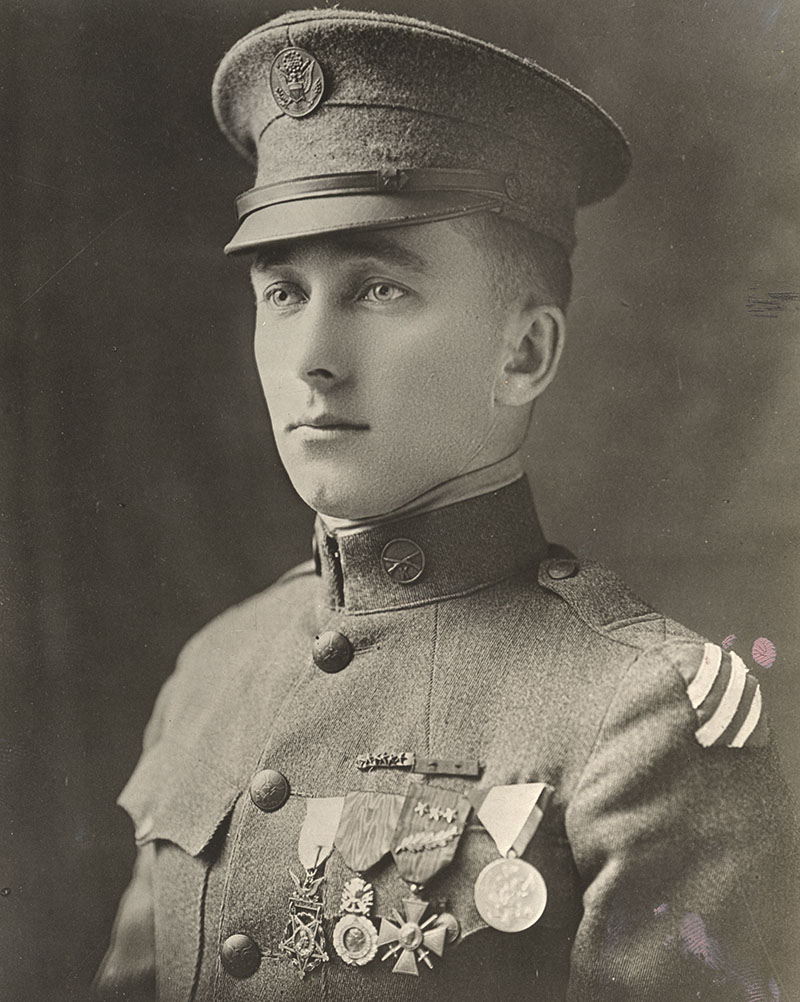
“Shortly afterwards when the enemy launched a counterattack against our forces, Pvt. Barkley got into the tank, waited under the hostile barrage until the enemy line was abreast of him and then opened fire completely breaking up the counterattack and killing or wounding a large number of the enemy. Five minutes later an enemy 77-millimeter gun opened fire on the tank point blank. One shell struck the driver wheel of the tank, but this soldier nevertheless remained in the tank and after the barrage ceased broke up a second counterattack, thereby enabling our forces to gain and hold hill 253.” In the after-action report, over 4,000 rounds of spent ammunition were counted.
Late in the afternoon, the tour stopped at the American Meuse Argonne Cemetery at Romagne-sous-Montfaucon and assisted in the “Taps” ceremony. A reading of a tour participant’s father’s moving letters also took place there.
Oct. 19
The actual attack on the St. Mihiel salient was scheduled for Sept. 12. The first reports on that day included in Field Orders No. 10 related that:
“The First Army, AEF, has defeated the enemy, causing him heavy losses in men, material and morale. All of our divisions have reached their assigned objectives today and several have progressed a considerable distance beyond these objectives. … The attack will continue tomorrow, with a view to completing the hostile defeat and gathering the booty.”
Leading up to the U.S. action at St. Mihiel was a visit to the French hallowed grounds at Verdun and the ossuary and cemetery there. Tour participants were guided through nearby trenches and bomb craters on a beautiful fall afternoon.
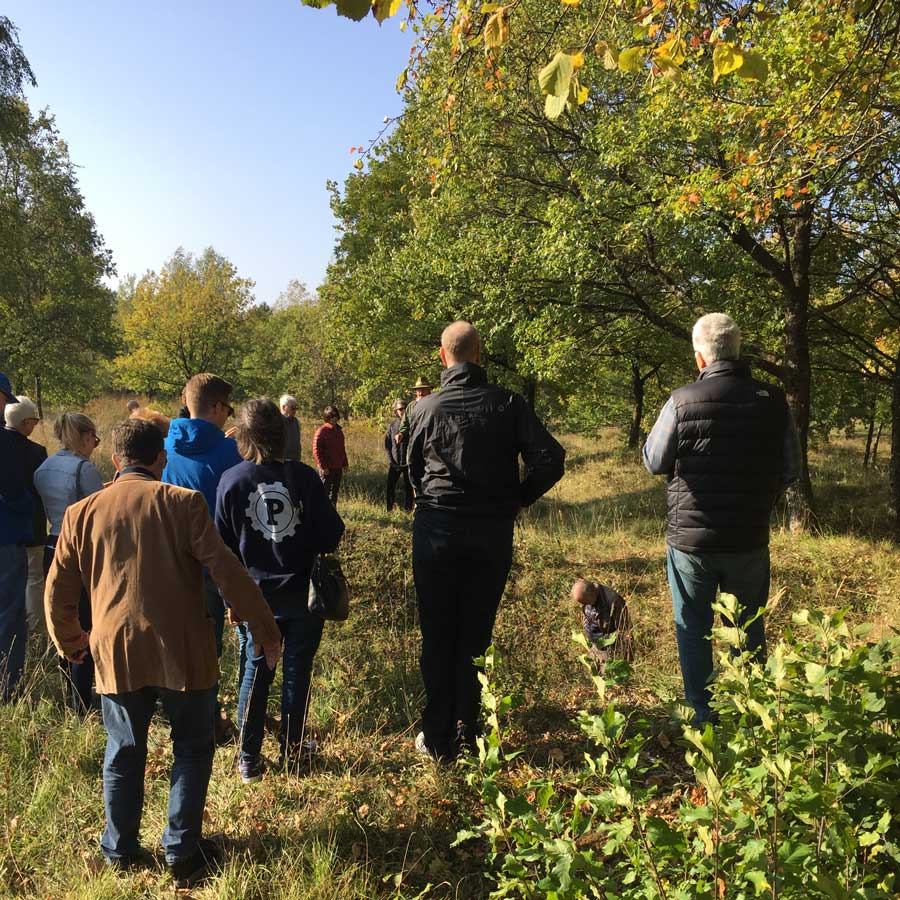
Truman’s battery was held in reserve during St. Mihiel, but he had the opportunity to visit Verdun which he described as “the most famous, and hardest fought city in France where every house I saw had a shell hole in it.” We stopped on the Verdun battlefield near a German bunker from the time which was the bunker or similar to the one that Truman wrote that he “learned to sleep with a gas mask on” in “a very large arched room.”
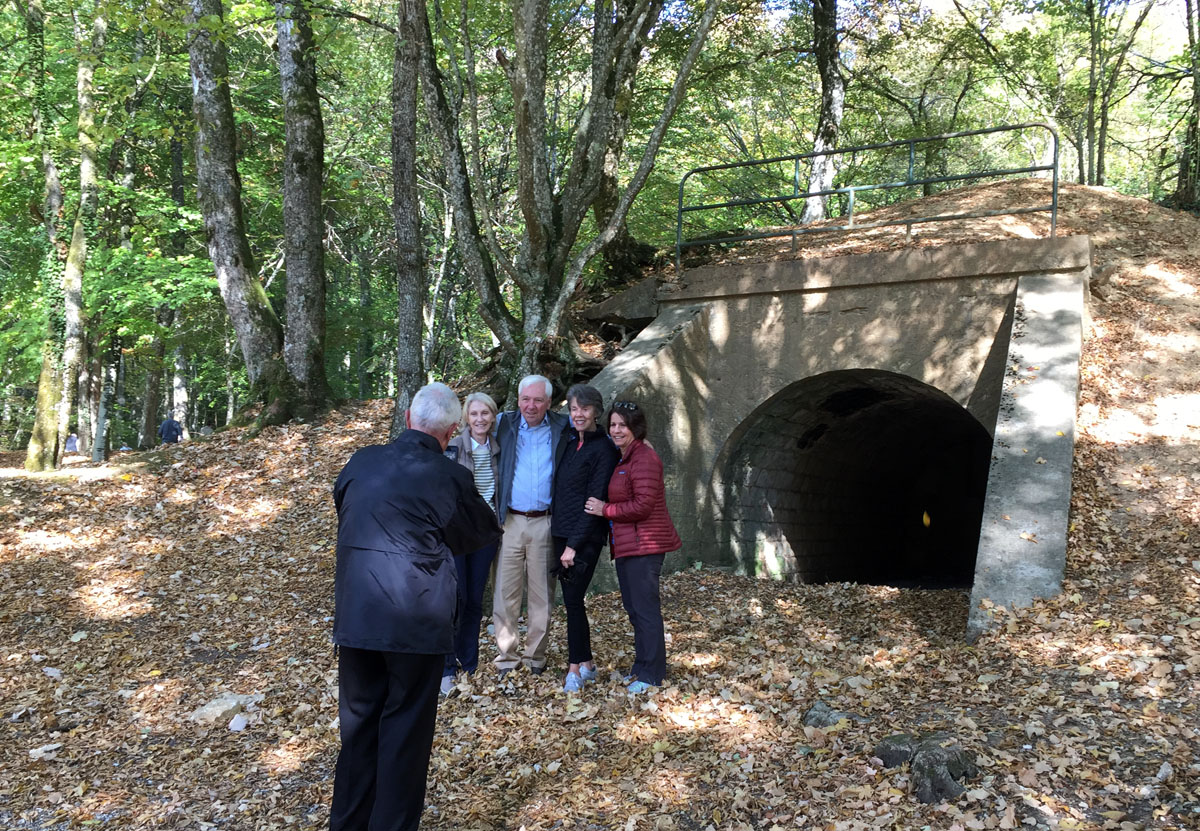
The very busy day culminated in the Montsec American Monument located on a hill overlooking almost the entire St. Mihiel Salient. A large map in the rotunda colorfully illustrates that important French and American action.
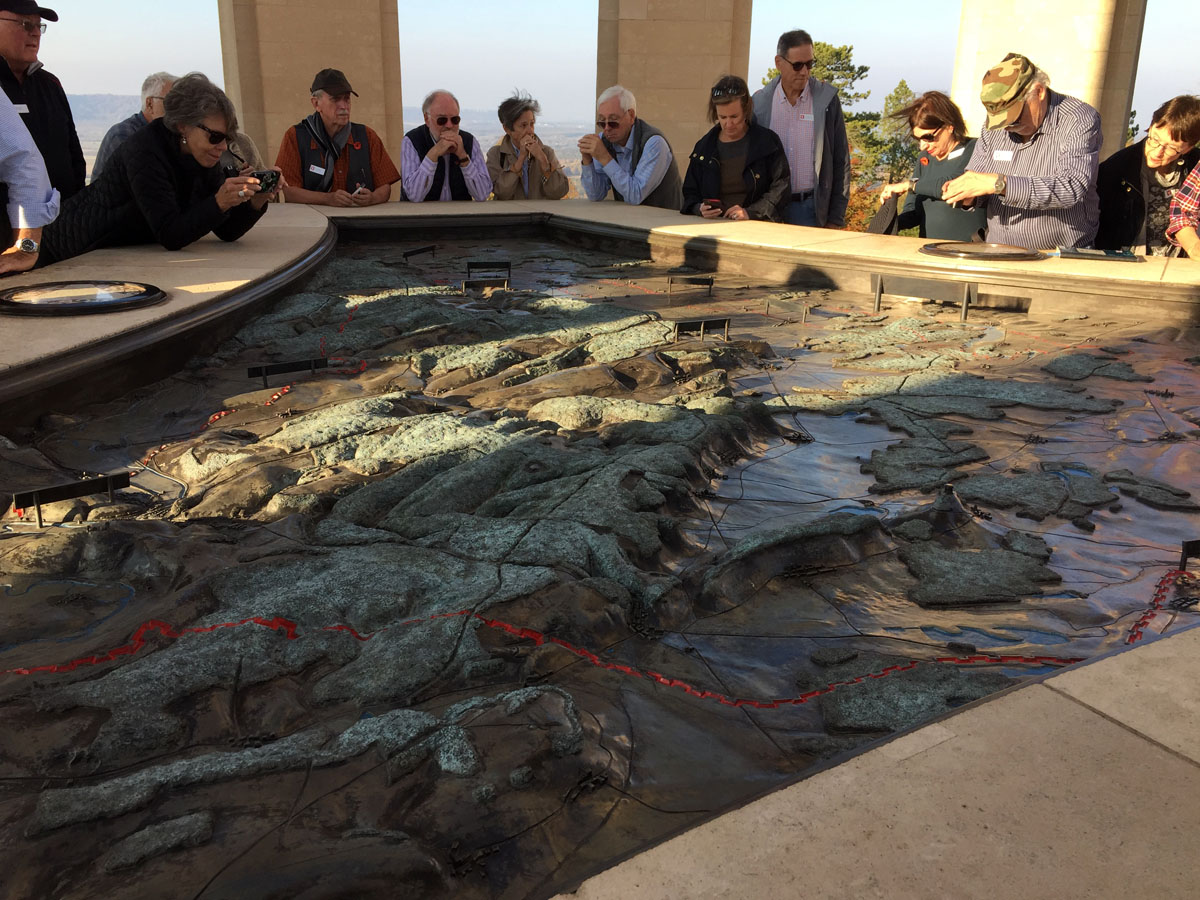
Oct. 20
The day was dominated by the battlefields of St. Mihiel where a German fortified hospital surrounded by deep trenches still evokes the pain and pathos of the war. A Bavarian dugout clearly illustrates the use of concrete and iron by the German forces in their defensive positions.
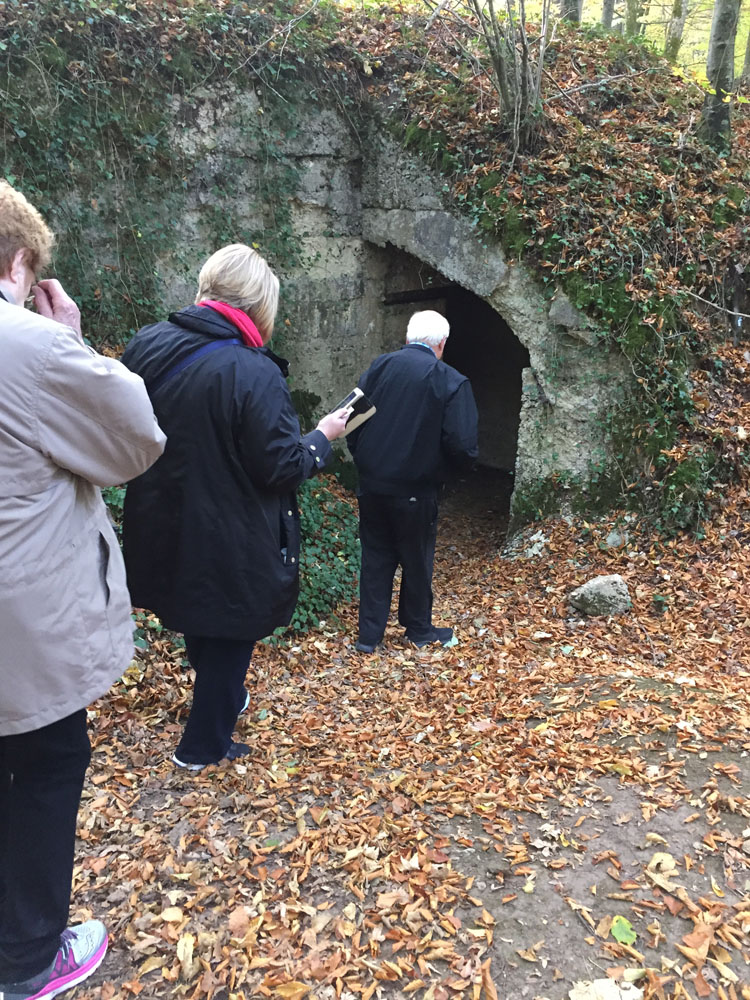
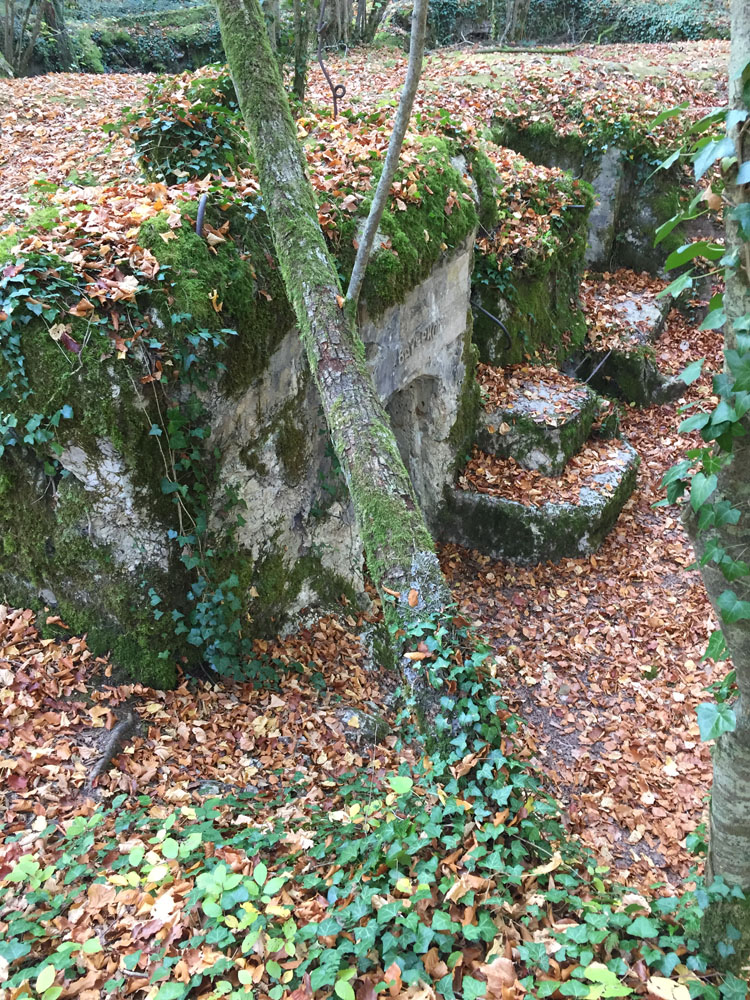
Sergeant Charles S. Stevenson, Co. A., 314th Engineers, 89th Division, AEF, from Olathe, Kansas, described his part in the St. Mihiel Drive and also finding a similar dugout and its contents.
“France - Sept. 18, 1918. Dear People: This is the seventh day of the St. Mihiel drive and I find myself sitting in a thick, muddy forest, with my knees and a gas mask as a table, writing to you. I went thru my first real touch of war and came out with nothing more serious than the loss of some sleep and a couple of tears in my best leggins [sic].
“It was some drive. Small, in comparison to many operations, to we rookies it was a real battle. Machine guns, rifles, shells, aeroplanes and tanks - everything you read about - I saw ‘em all. We followed the first line (the attacking party) for twelve hours and ours was a sort of “after the battle” review. I saw all kinds of German trenches, barbed wire entanglements, busted houses, burning trees, deep shell holes, torn-up railroad tracks, peaceful gardens, dynamited bridges. All kinds of German prisoners passed me on the way back.
“Sept. 20, 1918 / ... We have just finished being part of a drive – and our division has not yet been relieved…. The chase was a merry one! The Boche beat it - and beat it fast, too. I saw any number of prisoners – all young – and as far as I could see – well fed. We went thru a German camp and at their expense got some good stuff to eat. They have fine jam and tea – their bread is awful, and their coffee is vile. But ‘twas all better than hardtack!
“Their officers’ quarters were luxurious - plush chairs, fine carpets, cut glass, fine beds, the best kind of mattresses - all furnishings were wonderful. Of course in their retreat they did quite a bit of messing up, but their surroundings and the finishing of them were plainly evident.”
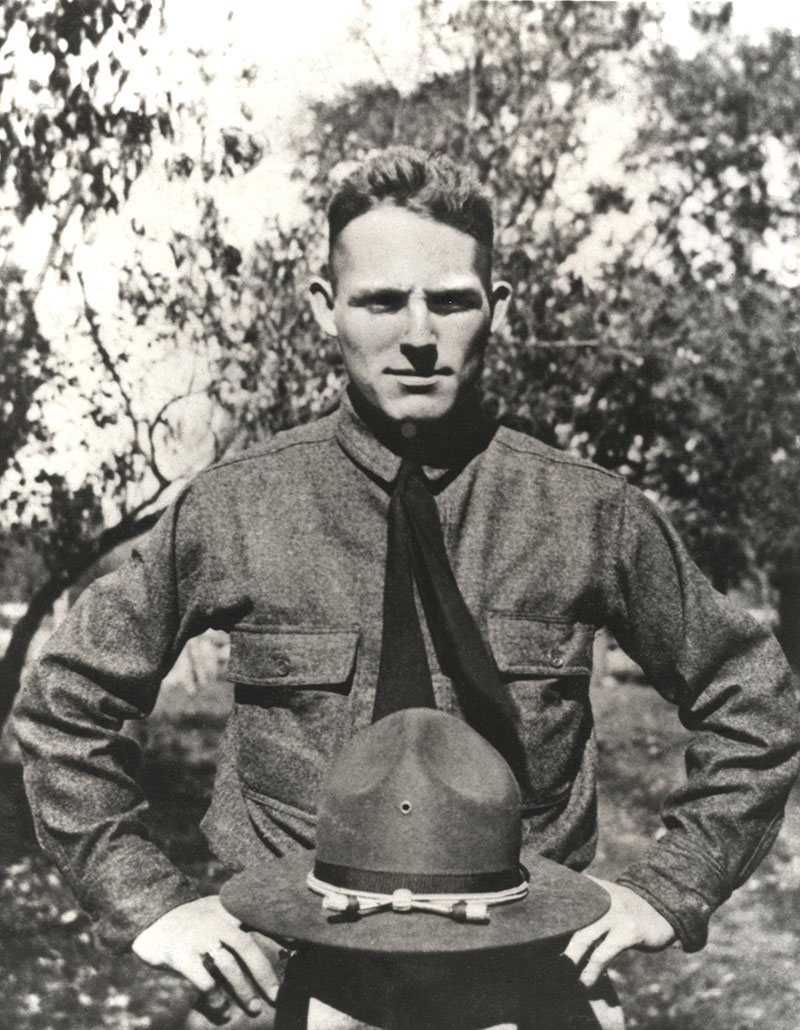
Oct. 21
In WWI the song went “How you going to keep ‘em down on the farm after they’ve seen Paree?” On our tour it was “how you going to keep ‘em on the coach after they’ve seen Paree” for the next venue and not be distracted by Paris itself. We did manage good visits to the French Army Museum and the rest of Les Invalides which includes Napoleon’s tomb. The Legion of Honor Museum held incredible awards from many years and many famous people.
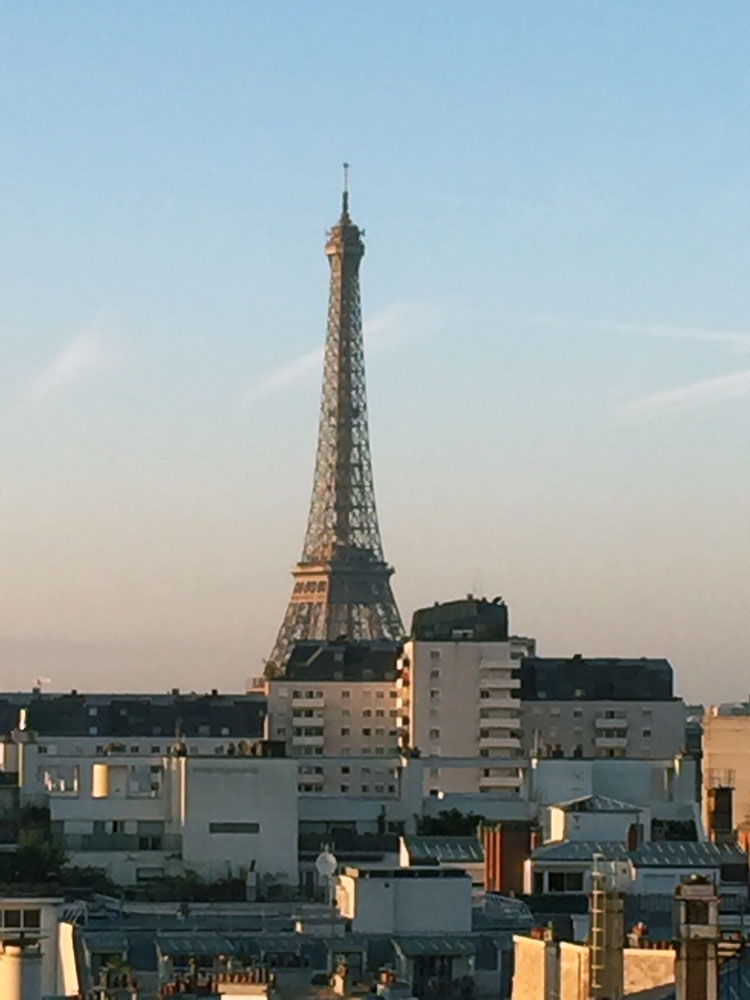
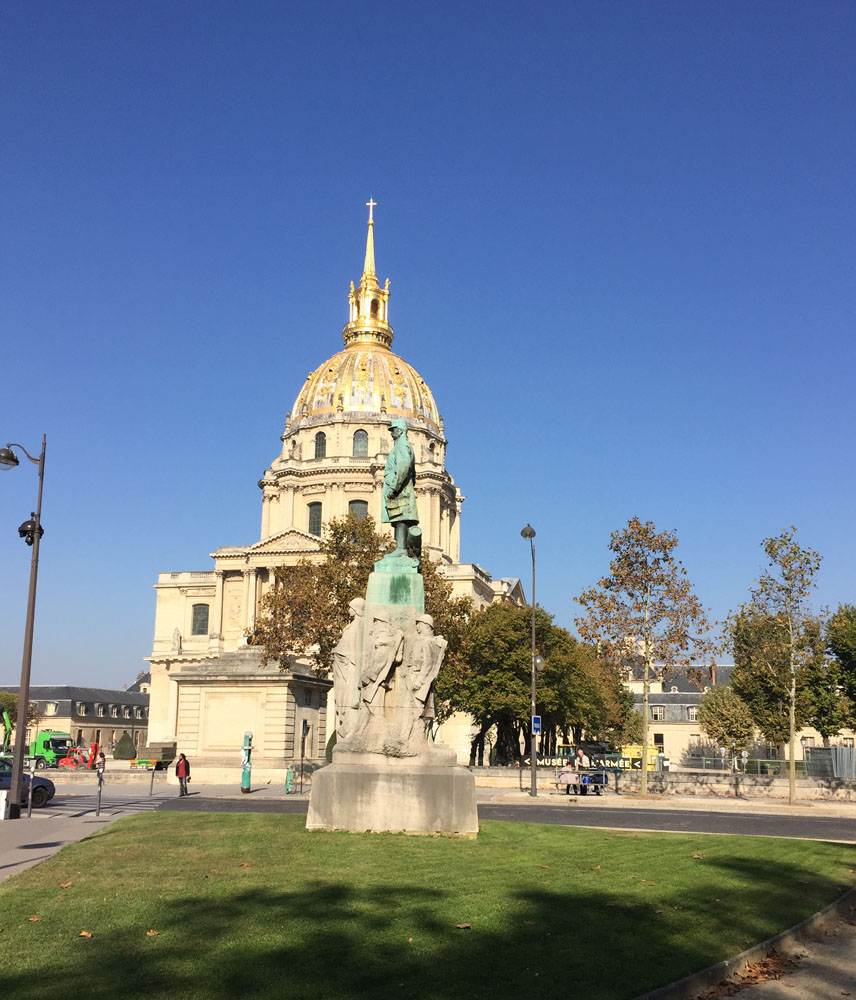
One American volunteer, Ruth Emory, American Red Cross, Chief Clerk, Paris Bureau, Department of Military Affairs wrote home:
“Tuesday, March 12th, ‘18 / You’ll be surprised to know that I’m writing this at eight a.m. on a Sunday morning, fully dressed and had my breakfast! We have had one alarm after another. There was one Friday night but the Germans were driven back before reaching Paris and they only succeeded in bombing the outskirts. Then yesterday a.m. I woke up at the sound of explosions, went to the office, and about 9:30 the alert was sounded again - of course everyone thought it was a daylight raid and we worked all day long with explosions every once and awhile - that is the Americans did! The poor French tore to the cellar and subway and stayed there all day. It wasn’t until five in the afternoon that the signal was given “all clear” and we learned that it wasn’t an air raid, but the Germans were shelling Paris with a new gun [the so-called “Paris” gun] that carries a hundred miles! I suppose you have read all about it by now.”
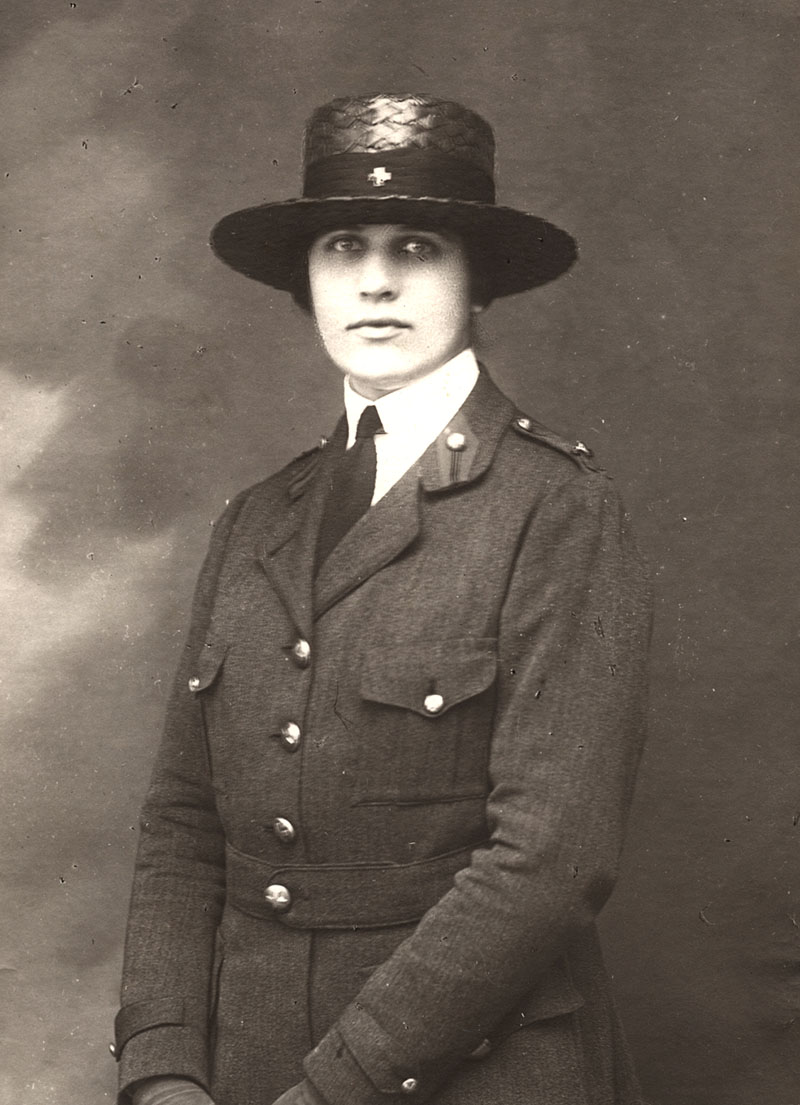
Oct. 22-23
On the 22nd we bid adieu to 18 of our travelers while the rest of the intrepid group headed north out of Paris to another region and another war. Our first stop was the same that the British glider troops made early on the morning of June 6, 1944: the Pegasus Bridge. The airborne troops were to capture two bridges intact so that Allied forces coming inland could cross from the D-Day beaches. This action was one of the finest small-unit actions during the Allied Invasion of Normandy. An excellent museum there also features the original bridge preserved on the museum grounds.
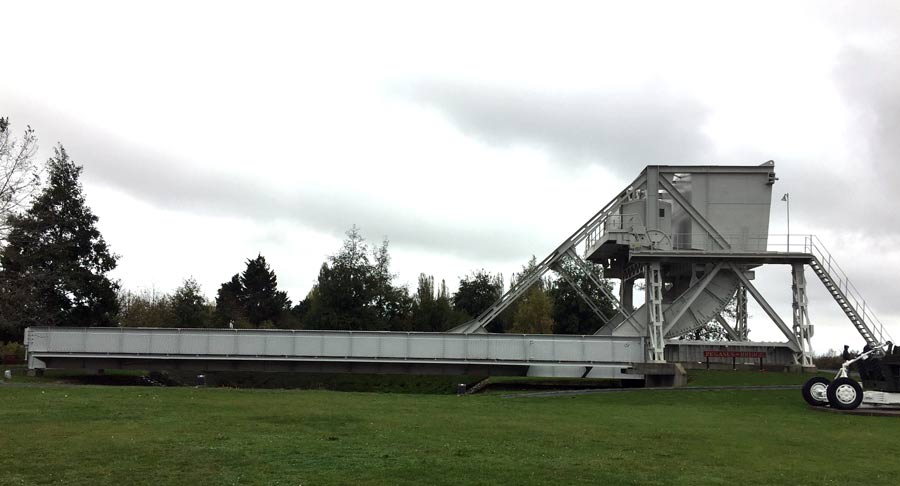
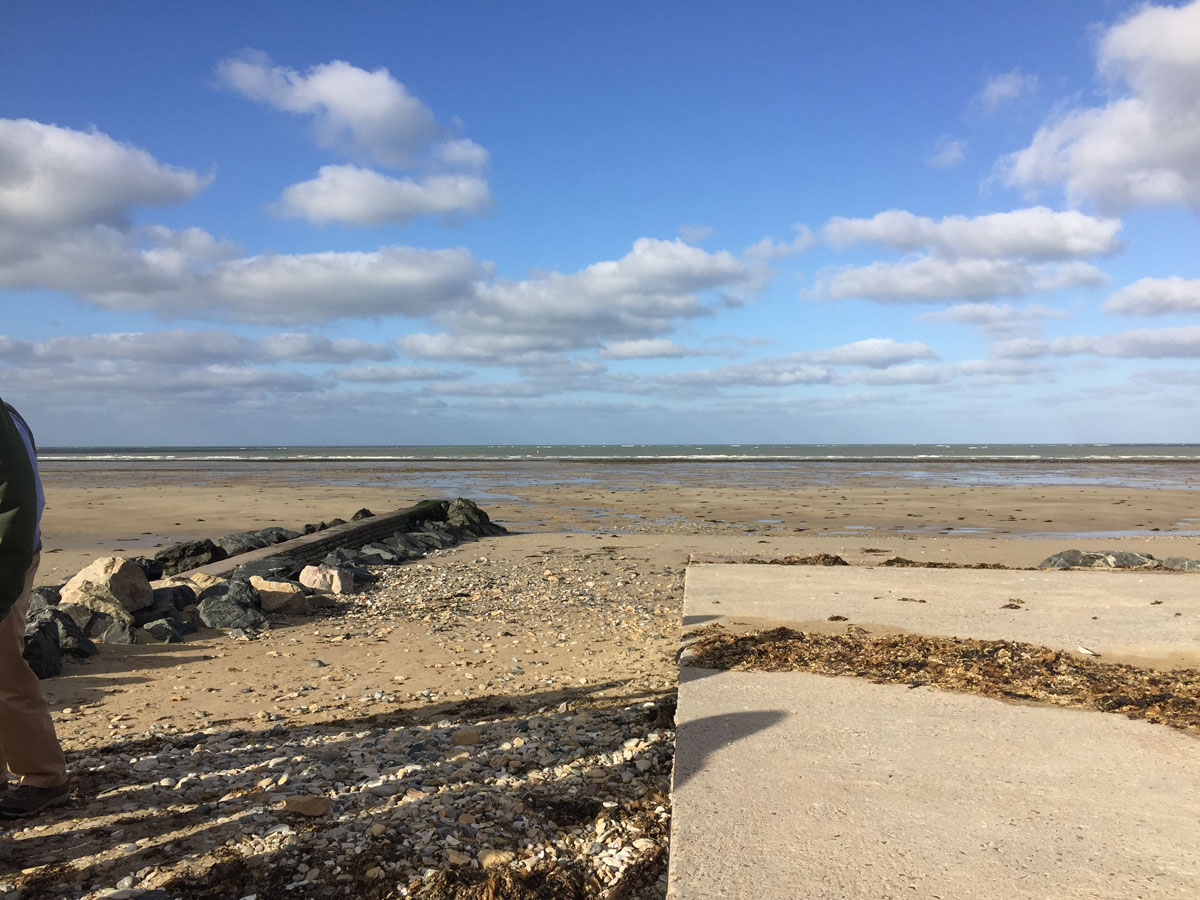
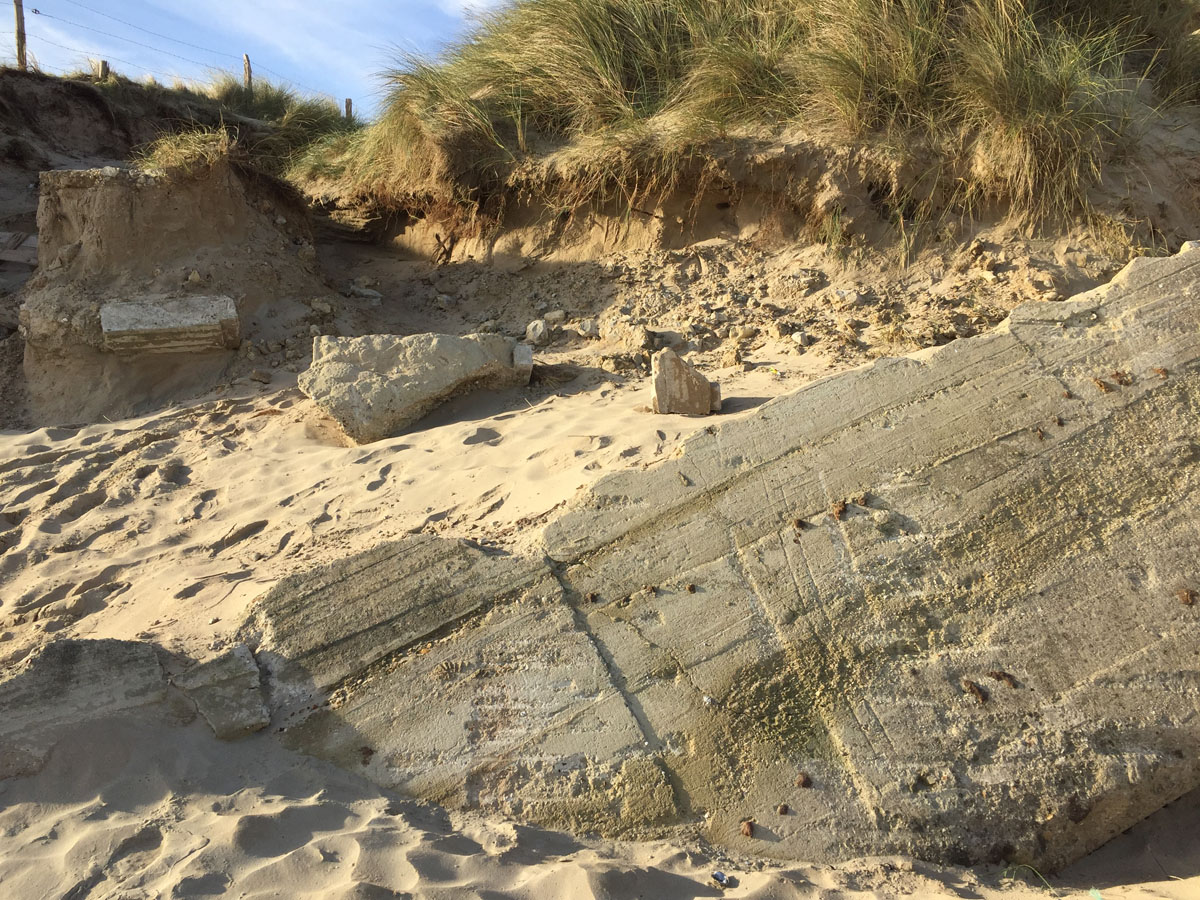
The British and Canadian beaches were visited, along with Utah Beach of the American forces. A stand was made at the famous action of Captain Dick Winters and Easy Company of the 101st Airborne Division.
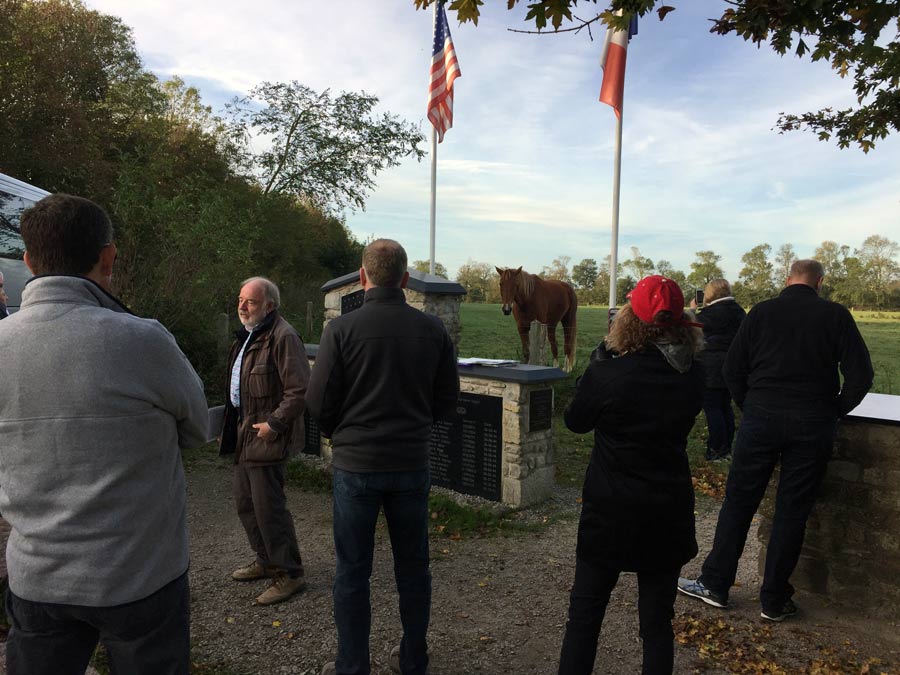
Good museums at Sainte-Mère-Église told the story of the American airborne in great detail. A visit was made to the famous Pointe du Hoc captured by American Rangers.
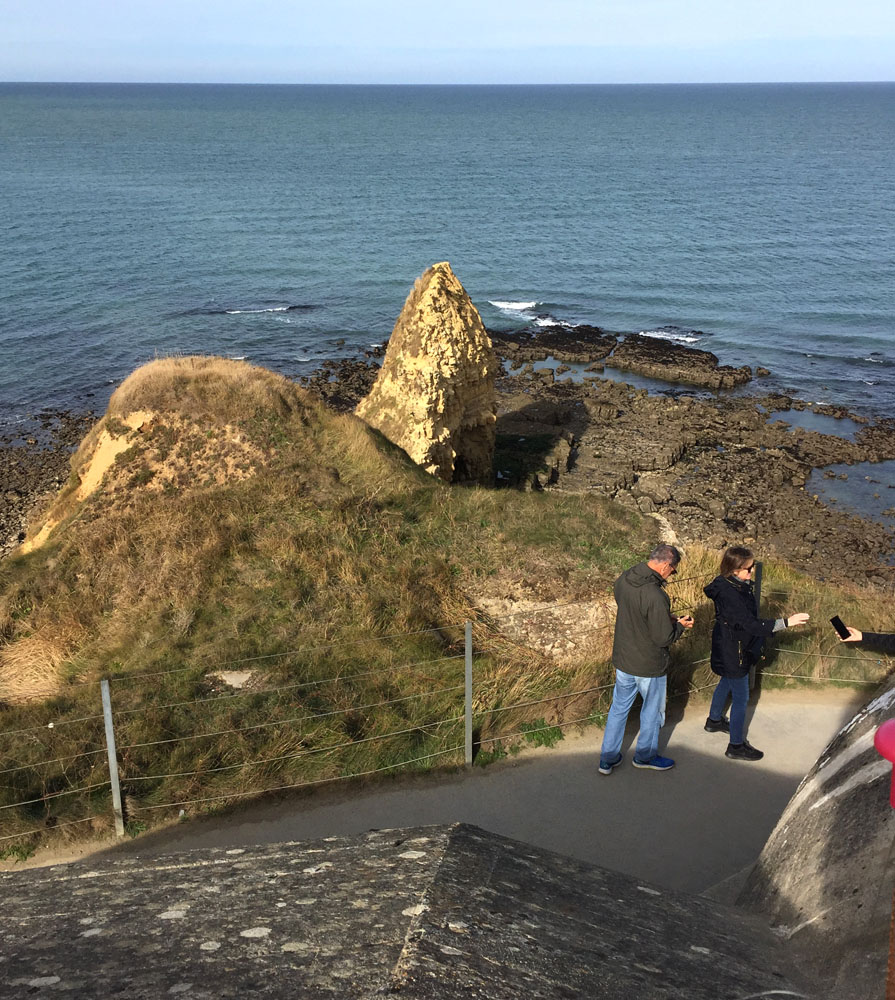
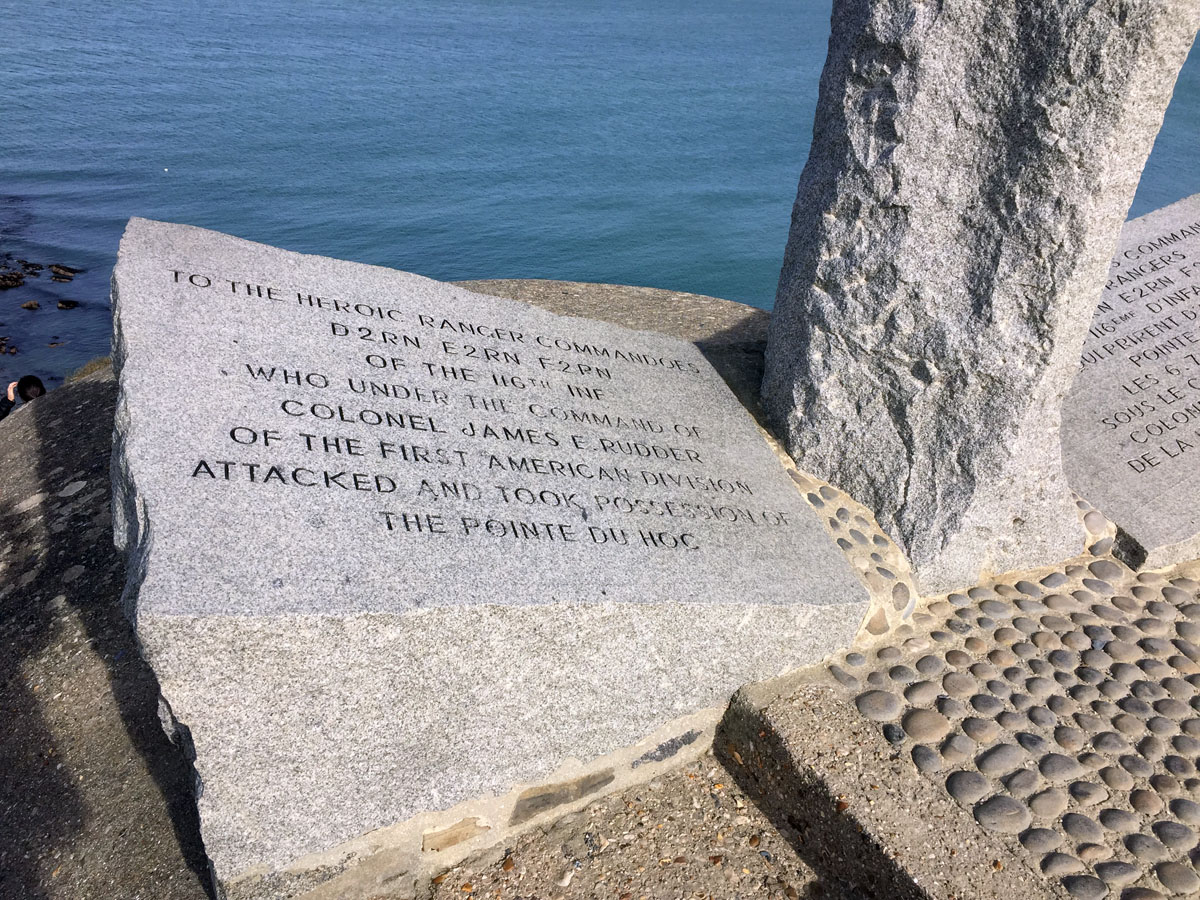
An emotional visit to the U.S. Normandy Cemetery ended the day. For this writer, one very poignant site there was that of US flyer Quentin Roosevelt killed in WWI whose remains were moved next to his brother, General Theodore Roosevelt Jr., WWI veteran and Medal of Honor recipient for his actions on Utah Beach on D-Day. He died in July of 1944 of a heart attack.
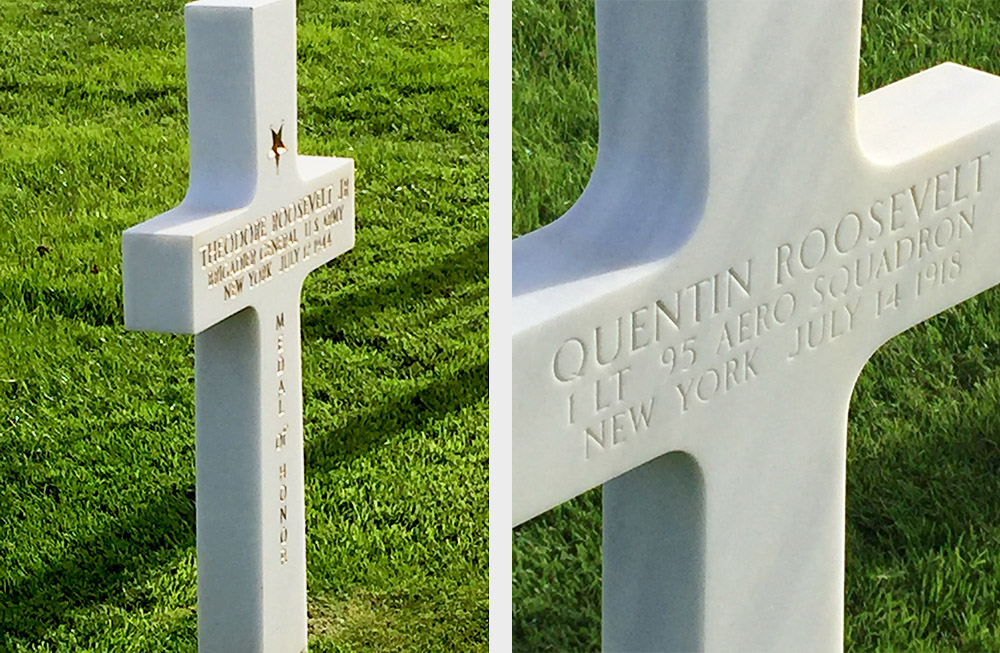
An early morning return on the coach on Oct. 24 to Charles de Gaulle Airport in Paris brought a great tour to a close.
